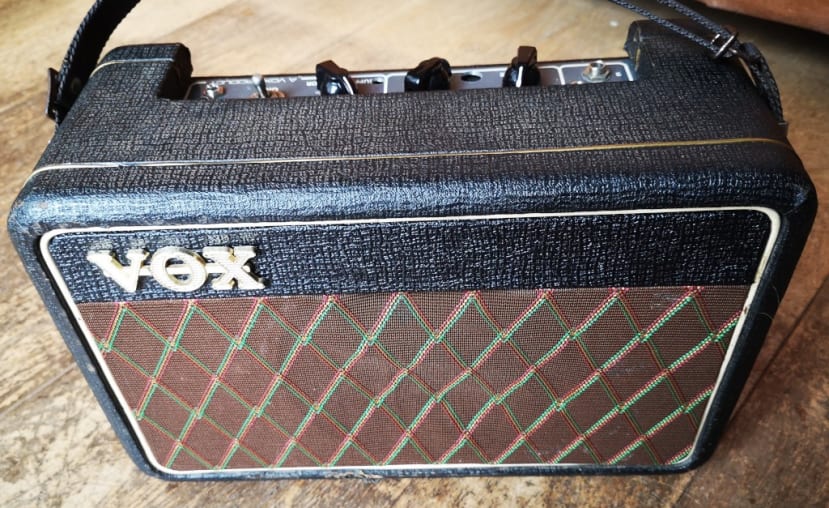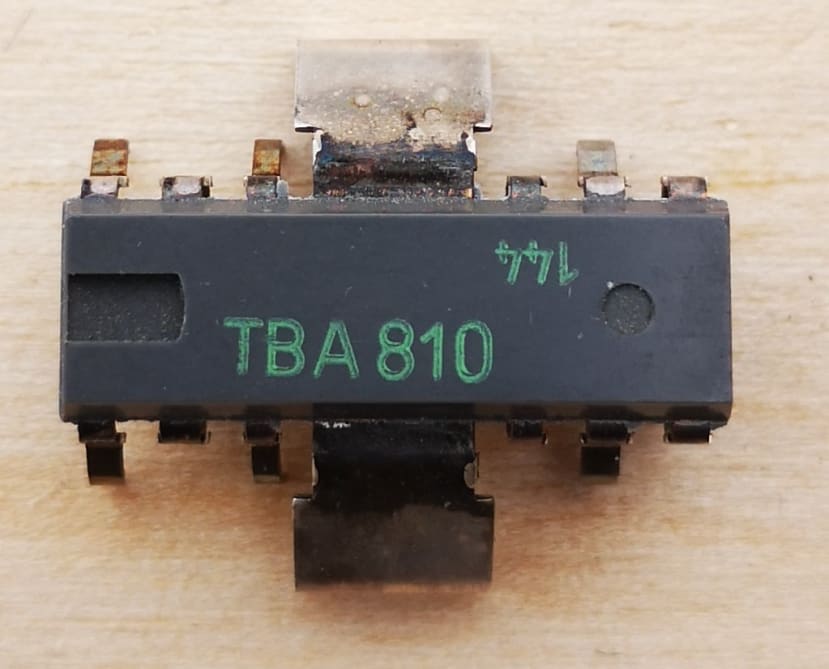Restoring a Vintage Vox Guitar Amp Part 2: Restoring the Cabinet and Power Supply
Follow articleHow do you feel about this article? Help us to provide better content for you.
Thank you! Your feedback has been received.
There was a problem submitting your feedback, please try again later.
What do you think of this article?
Re-covering, new speaker cloth and researching power supply requirements.
In the first part of this blog, I detailed how I tested and replaced electrolytic capacitors in the 40-year-old circuit board, and swapped out the worn potentiometers. Now to tackle the appearance of this much messed about with amplifier.
The Vox Escort was designed to look like a miniature version of the iconic Vox AC30, a guitar amplifier that has been used by everyone from the Beatles and the Rolling Stones to Radiohead and U2. It features the trademark Vox diamond-patterned speaker cloth and is covered in a black textured vinyl cloth known as Tolex. As outlined in the previous blog post, my amplifier had seen better days and the speaker cloth and some of the Tolex needed replacing. It also had some extra holes drilled in the top panel and I planned to try and use at least some of these, for things such as extra inputs and indicator LEDs — to help make the panel look a bit neater.
Re-covering the amplifier
I decided to tackle the Tolex and speaker cloth first. I did some research and the consensus seems to be that contact adhesive is the best for fixing Tolex. I laser cut a new back panel for the amplifier from 5mm MDF, as the old one had a couple of holes in it – notably one very large one where a domestic mains socket had been mounted.
I then cut a piece of Tolex about 15mm larger than the panel so there was enough to fold over and glue the edges. The contact adhesive worked well but meant there was not really the opportunity to re-position things so I had to work quickly and accurately. I also discovered that if I used too much glue it melted the Tolex.
Rather than attempt to remove the front panel to re-cover it — as it is glued firmly in place and integral to the construction of the amp — I decided to cut two pieces of 3mm MDF to fit over the front. The main piece would support the speaker cover, with a strip along the top covered with Tolex and featuring the distinctive Vox logo.
I was lucky enough to have been given a piece of the speaker cloth by someone I found when doing an internet search on the restoration of Vox amps. Stephen Grosvenor had done a great job on restoring an old AC30 and had some offcuts of the cloth and kindly sent me a piece. The cloth is a very open weave so I had to take care not to use too much adhesive, as it easily bled through to the front. Some small patches that did come through I carefully removed by gently rubbing with a finger before they were properly dry.
Once these 2 panels were in place, fitted neatly on to the recessed front panel the amp began to look like its old self.
Filling the holes
At some point in its history, quite a few extra holes have been drilled in the metal top panel of the amp. I re-purposed one of these for the power supply input, fitting a barrel connector (705-1525) compatible with my 18V desktop power supply (144-0974) .
Another of the holes I fitted with a 3.5mm jack socket (505-1429) which would be convenient for plugging in a phone or PC, for example.
Power supply
As I mentioned above I have an 18V desktop power supply for the amp, but using 12V would be a lot more convenient and would mean I could use a more readily available 12V battery and charger — which I plan to add at a later stage. It would also mean I could power it from the 12V solar chargeable system I built a while ago.
I did some research into the Integrated Circuit (IC) used in the amplifier, a TBA810, which is described as a 12 lead quad in-line plastic package, intended for use as a low-frequency class B amplifier. I even managed to purchase a replacement IC (pictured above) described as “New Old Stock”, in case I ever needed one. Apart from general curiosity about my amplifier, I was interested to know if I could successfully run the amp on 12V, instead of the 18V that Vox intended.
I found a data sheet according to which “the TBA 810 provides 7 W power output at 16 V, 6 W at 14.4 V, 2.5 W at 9 V, 1 W at 6 V and works with a wide range of supply voltages (4 to 20 V)”, so I reckoned 12V would give me between 4W and 5W which should be fine as a small practice amp to be used mainly in the home. The datasheet also contained an example circuit, so I checked the values of the components it used against the ones in the Vox circuit and they seemed, for the most part, the same – the only thing to do now was connect it up to 12V and see how it sounded.
What next
As mentioned previously, I am going to look into putting back the option of running the amp from batteries, but going for the re-chargeable option. I am also thinking that, although I have gone to the trouble of re-capping the existing amplifier circuit, the Nu-Tube guitar pre-amp developed by my former colleague might make a good alternative, and I’m sure there is a spare one of the circuit boards he had made back in the workshop. It should be simple enough to integrate this in-line and bypass it for the original sound if I felt like it. The switch required to do this would take care of the last remaining hole in the top panel! I have also noticed that the original amplifier featured some gold trim along the top of the speaker cloth, so I will try and source some of that to add a finishing touch and a true 1970s aesthetic.







